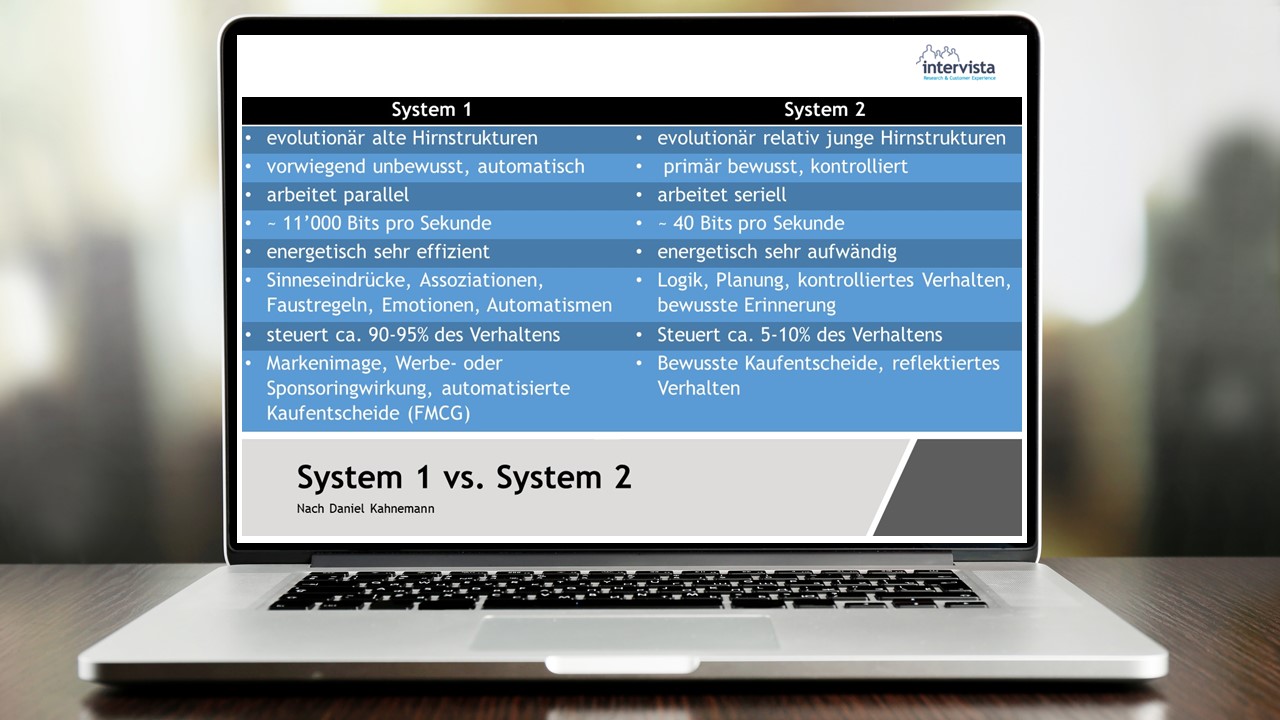Mostly, explicit measurement methods are used in market research, for example to measure the opinion and attitude towards a product or a brand. But consumers unconsciously learn much more about brands and products than they are aware of and can explicitly name. And deliberate, conscious answers about one’s own attitude are often distorted by social desirability and social norms.
To account for these intuitive and automated decision-making processes from System 1, implicit measurement procedures are often used in research. Implicit measurement procedures minimise these effects of social desirability by requiring respondents to give their ratings spontaneously, leaving them no time to consider whether or not their statements are socially conforming. In addition, they allow for the elicitation of intuitive and unconscious opinions and attitudes.
intervista has a reaction time-based method that has been tried and tested over many years and which enables the measurement of such spontaneous and automatic reactions in the millisecond range. We integrate this measurement method into our online questionnaires and can thus link the classic explicitly collected survey data with such reaction time-based data. The reaction time-based measurement can also be used on mobile devices. Since, in contrast to academic research, filling out online surveys is not a controlled laboratory situation, a lot of experience is required in setting up such a measurement and in evaluating and interpreting the reaction time-based data.
 Deutsch
Deutsch
 English
English
 Français
Français



